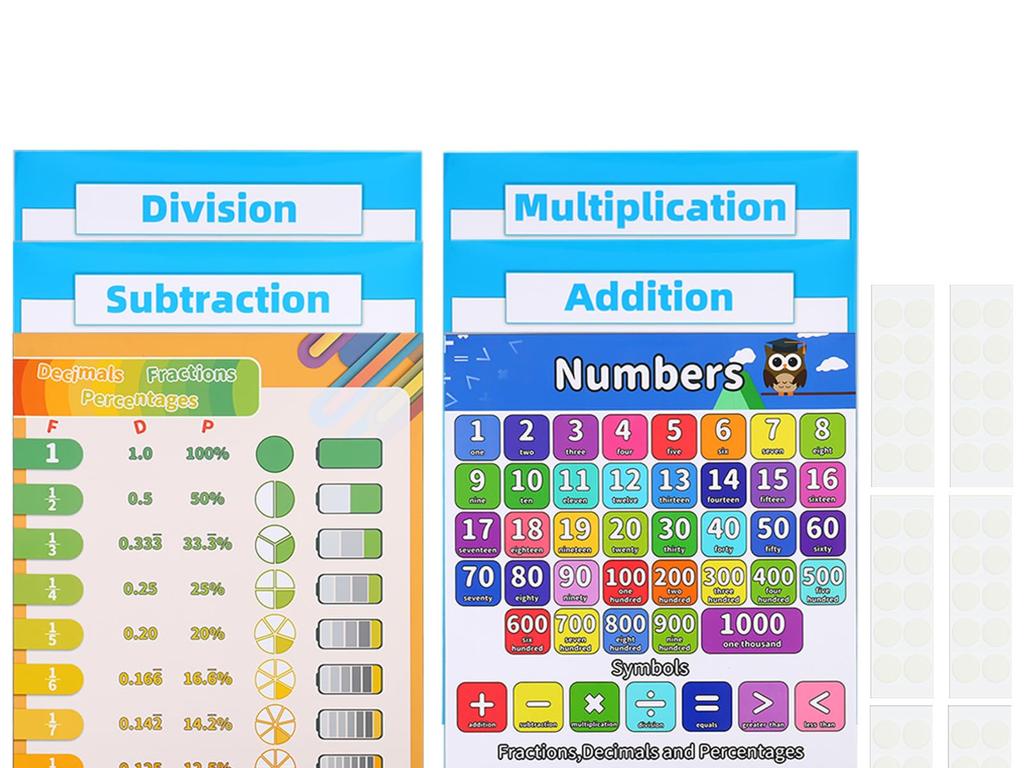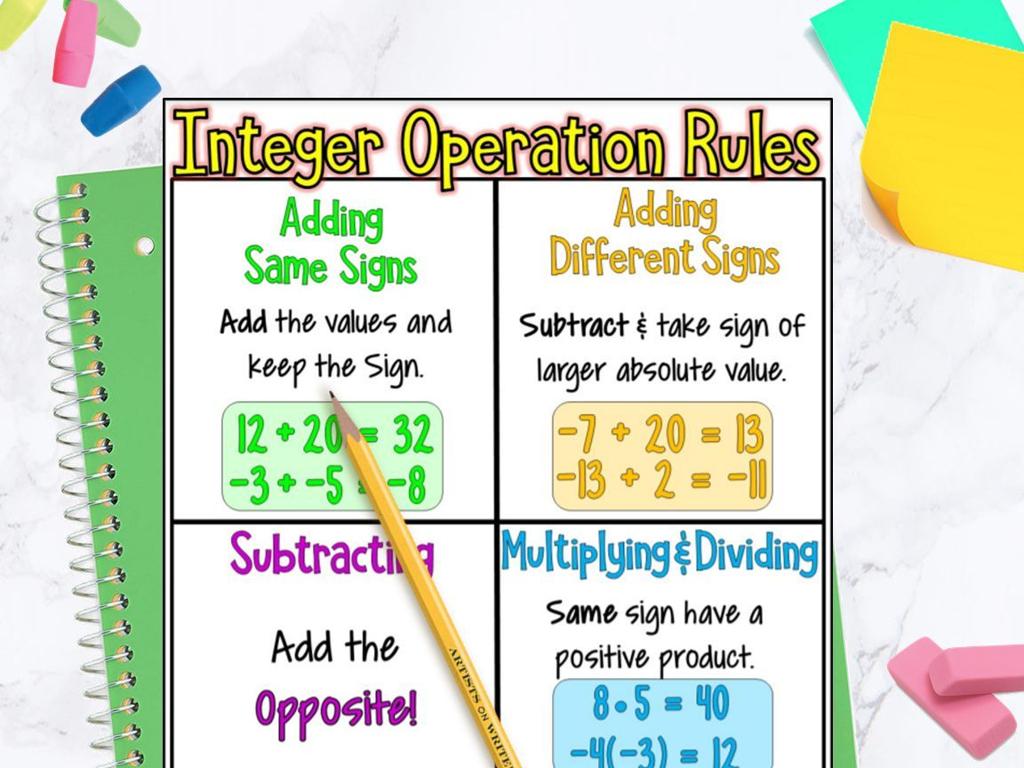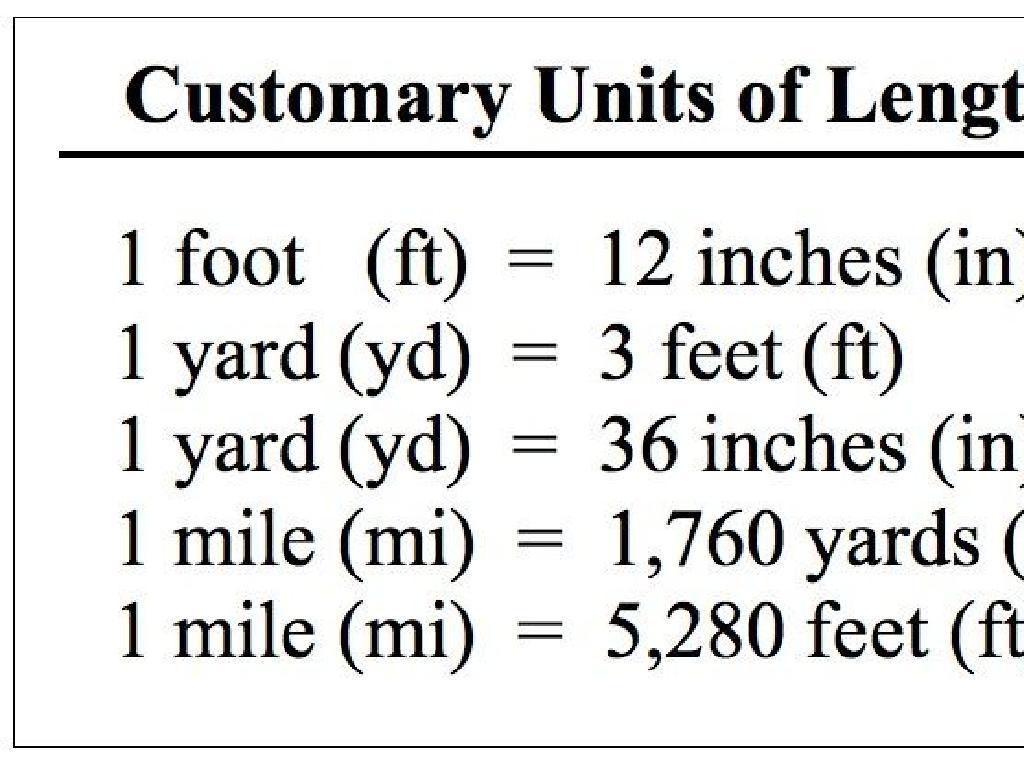Trade And Specialization
Subject: Social studies
Grade: Sixth grade
Topic: Basic Economic Principles
Please LOG IN to download the presentation. Access is available to registered users only.
View More Content
Trade and Specialization in Economics
– What is trade and specialization?
– Trade is exchanging goods; specialization is focusing on a specific product.
– Benefits of specialization for countries
– Countries can produce more efficiently and increase output.
– Exploring comparative advantage
– Comparative advantage: excelling in producing certain goods more efficiently.
– Today’s Objective: Economic success
|
This slide introduces the concepts of trade and specialization within the framework of basic economic principles. Begin by explaining that trade is the act of buying and selling goods and services, while specialization refers to a country or individual focusing on producing a particular type of product or service. Emphasize the benefits of specialization, such as increased efficiency and productivity, and introduce the concept of comparative advantage, which explains how countries benefit economically by specializing in products they can produce most efficiently. The objective of today’s lesson is to help students understand why trade and specialization are fundamental to a country’s economic success. Engage students with examples of specialization, such as a region’s climate being suitable for certain crops, and encourage them to think about how this can lead to trade between countries with different specializations.
Understanding Trade
– Define trade
– Exchange of goods/services between parties
– Daily life trade examples
– Buying a book, selling lemonade
– International trade
– Countries exchange products they specialize in
– Benefits of trading
|
This slide introduces the concept of trade to students, explaining it as the exchange of goods or services between parties. Use everyday examples to which students can relate, such as purchasing a book from a bookstore or selling lemonade on a hot day. Highlight the importance of trade between countries, emphasizing how nations trade products in which they have a specialization, leading to a more efficient global economy. Discuss the benefits of trade, such as increased variety of goods, better prices, and access to products that may not be available domestically. Encourage students to think of trade as not just an economic activity, but as a way of connecting with and relying on others, both locally and globally.
Understanding Specialization
– Define Specialization
– Specialization: focusing on a limited scope of products or skills
– Reasons for Specialization
– People and countries specialize to increase efficiency and productivity
– Benefits of Specialization
– Leads to a surplus, trade opportunities, and economic growth
|
Specialization is a fundamental concept in economics where individuals, businesses, or countries focus on producing a limited range of goods or services to increase efficiency and productivity. This slide will explain what specialization is, why it occurs, and the benefits it brings. Specialization allows entities to become experts in their field, leading to higher quality products and services. It also creates a surplus, which can be traded for other goods and services, fostering trade relationships and contributing to overall economic growth. Encourage students to think of examples where they have specialized in their own lives, such as becoming skilled at a particular sport or hobby, to help them relate to the material.
Understanding Economic Interdependence
– Trade creates interdependence
– When countries exchange goods, they become economically connected.
– Countries rely on each other
– For example, the US imports electronics from China and exports agricultural products.
– Benefits of interdependence
– It can lead to lower costs and more variety of goods.
– Challenges of interdependence
– It can also lead to reliance on other countries for essential goods.
|
This slide aims to explain the concept of economic interdependence that arises from trade. Students should understand that as countries trade goods and services, they become reliant on each other’s economies. This can be beneficial as it may lead to a reduction in costs and increase in the availability of goods. However, it also means that countries can become dependent on others for essential items, which can be risky if political or economic instability occurs. Discuss examples of how the United States is interdependent with other countries, such as importing electronics from China or oil from the Middle East, and exporting entertainment and technology. Encourage students to think about the pros and cons of such economic relationships.
Comparative Advantage and Specialization
– What is Comparative Advantage?
– Ability of a country to produce goods at a lower opportunity cost than others.
– Comparative Advantage in Real Life
– Country A excels in producing wine, while Country B is great at making cheese.
– Linking Advantage to Specialization
– Countries focus on producing goods where they have a comparative advantage.
– Benefits of Specialization
|
This slide introduces the concept of comparative advantage, which is a key principle in economics that explains how countries can gain from trade by specializing in goods they produce most efficiently. Use relatable examples, such as one country producing wine more efficiently and another producing cheese, to illustrate how specializing in these areas can benefit both. Explain that by focusing on goods where they have a comparative advantage, countries can trade to obtain other goods at a lower cost than if they tried to produce everything themselves. This leads to increased efficiency and potential economic growth. Encourage students to think of other examples and consider how specialization might affect their daily lives.
Understanding Trade Barriers
– Define Trade Barriers
– Obstacles that restrict international trade
– Explore Tariffs, Quotas, Embargoes
– Tariffs are taxes, quotas limit quantity, and embargoes are bans
– Impact on Specialization & Trade
– Barriers can limit trade and affect countries’ production focus
– Discussing Trade Policy
|
This slide introduces students to the concept of trade barriers and their role in international trade. Begin by defining trade barriers as obstacles set by governments to control the amount of trade across their borders. Explain the three main types of trade barriers: tariffs, which are taxes on imported goods; quotas, which limit the quantity of a good that can be imported or exported; and embargoes, which are outright bans on trade with certain countries. Discuss how these barriers can influence a country’s specialization in certain products and the overall flow of trade. Encourage students to think about how trade barriers might impact their daily lives, such as the availability and prices of goods they use.
Understanding Trade Agreements
– Define Trade Agreements
– Agreements between countries to manage trade
– Examples: NAFTA, EU
– North American Free Trade Agreement, European Union
– Role in promoting trade
– They reduce trade barriers like tariffs
– Encouraging specialization
– Countries focus on producing goods they’re best at
|
This slide introduces the concept of trade agreements and their significance in the global economy. Begin by defining trade agreements as deals between two or more nations that outline how they will work together to ensure mutual trade benefits. Provide examples such as NAFTA, which includes the United States, Canada, and Mexico, and the EU, which is a political and economic union of European countries. Explain how these agreements often reduce or eliminate tariffs, making it cheaper and easier for countries to buy and sell goods to each other. This, in turn, allows countries to specialize in producing certain goods where they have an advantage (like climate, technology, skilled labor), which boosts efficiency and economic growth. Encourage students to think about how these agreements might affect the prices of goods they buy and the variety of products available.
Class Activity: Trading Simulation
– Form groups as different countries
– Each group has unique resources
– Negotiate trades to specialize
– Discuss successful trade strategies
– Think about what made some trades work better than others
|
In this interactive class activity, students will be divided into groups, each representing a country with its own set of resources. The goal is for each group to negotiate with others to trade their resources, aiming to specialize in certain products and maximize the overall benefits for their ‘country.’ After the trading simulation, lead a debriefing session where students reflect on the strategies that led to successful trades. Encourage them to consider the importance of negotiation skills, the value of different resources, and the benefits of specialization. Possible activities: 1) Role-play as country leaders, 2) Use classroom items as resources, 3) Create a trade agreement document, 4) Reflect on the impact of trade barriers, 5) Discuss real-world trade examples.






